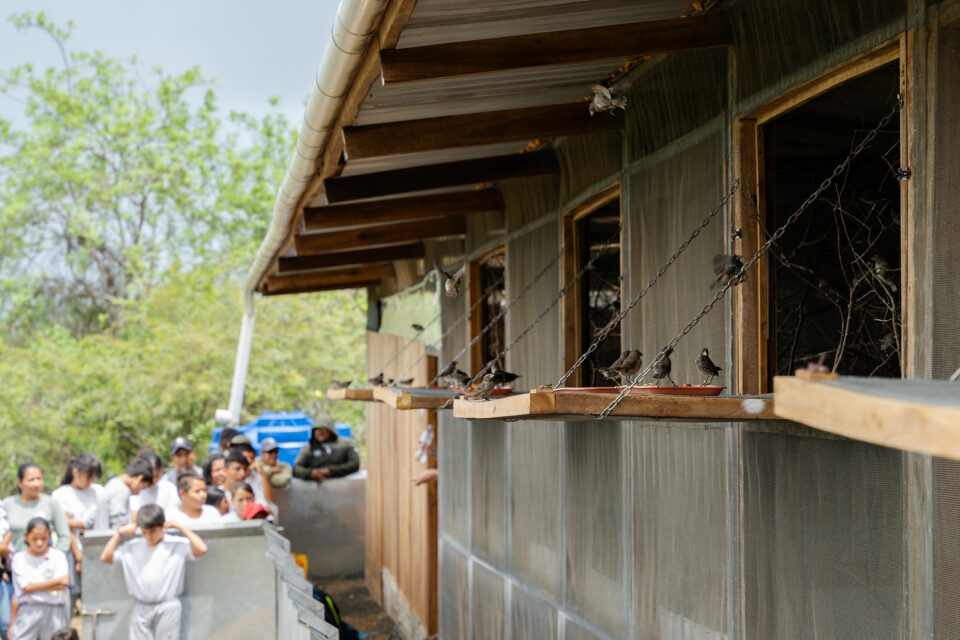

Identifying Darwin’s finches
Darwin’s finches are all incredibly similar in shape, size and colour, but there are a few differences which can help you get started in identifying them.
Darwin’s finches, or Galapagos finches, are small land birds found in the Galapagos Islands. There are 18 different finches in the Geospizinae subfamily. They belong to the tanager family of birds and are actually not closely related to true finches at all. The closest known relative of the Galapagos finches is the dull-coloured grassquit, which is found in mainland South America.
Only one finch in the group known as Darwin’s finches is not native to Galapagos. The Cocos finch can only be found on Cocos Island, an offshore island in Costa Rica. The rest of Darwin’s finches are found only in the Galapagos Islands, but are spread across the Archipelago.
Darwin’s finches are all incredibly similar in shape, size and colour, but there are a few differences which can help you get started in identifying them.

Plumage
Darwin’s finches vary in shades and tones, but not enough to make the changes in appearance as obvious as other species of birds. This means that plumage is not the easiest way of identifying the finches. The majority of Darwin’s finches are generally dull black, brown or olive, often with streaky plumage, short tails and short, rounded wings. Unfortunately, this makes identifying the species just by the plumage very difficult! Plumage colour can, however, be helpful for identifying if you are looking at a male or female finch species. For example, the males of the ground finches usually have black plumage, whereas the females have brown, streaked plumage.

17
of the 18 species of Darwin's finch are endemic to Galapagos
Habitat
The simplest way to identify the finches is to know the locations where they can be seen in the Archipelago. Every aspect of the finch’s variations is based on their immediate and unique habitat. Many animals in Galapagos are endemic to particular islands, and Darwin’s finches are no different. For example, the medium tree finch is endemic to Floreana island, while the vampire finch can only be found on Wolf and Darwin. Because of the great distance between the islands in Galapagos, the finches cannot interbreed and are forced to eat the food readily available to them, so over time the different populations on the various islands have became distinct. This table shows you which finches can be found on each island, so depending on where you are in Galapagos, you should be able to at least narrow down which finches you will be likely to spot.

Diet
The diet of these birds varies greatly from island to island due to the variation in the flora and fauna on each landmass. The techniques used by the finches for collecting food differs from island to island as well, which has led to the change in each finch’s appearance and behaviour. If you happen to see a finch feeding or displaying a particular type of feeding behaviour, this should help you to further identify which finch you have in your sight. For example, the medium and small ground finches feed on the ectoparasites of the iguanas and tortoises and the cactus ground finch feeds on the flowers of the Opuntia cactus. The woodpecker and mangrove finch use tools such as cactus spines in order to assist in its feeding on of beetle larvae, by digging them out of rotten wood, so these birds live in the humid swamp areas of the Archipelago.

Beak size and shape
These isolated populations of birds show considerable variations in bill structure and feeding habits that supported Darwin’s theory of evolution. The most visually noticeable aspect of variation between the finch species is certainly the beak size and shape. For example, slim, sharp beaks prevailed in insect-feeding birds; and short, thick beaks that were suitable for crushing seeds occurred in seed-eating populations. The largest beak belongs to the large ground finch, whose beak is huge in comparison to the rest of its body. The powerful beak is used for cracking hard seeds. The smallest of the beaks belongs to the small tree finch, used for finding tiny insects inside cracks in wood and rocks.
Hopefully this has given you a bit of a head start when it comes to identifying Darwin’s finches. But do bear in mind the words of author Michael Harris: “It is only a very wise man or a fool who thinks that he is able to identify all the finches which he sees”.
It is only a very wise man or a fool who thinks that he is able to identify all the finches which he sees.
Help us save the mangrove finch
We are working to protect one of the rarest birds on earth, the Critically Endangered mangrove finch, which is threatened with extinction by habitat loss and invasive species.
Related articles


Double your donation to rewild Galapagos with the Big Give

Promising signs on Floreana as five species of finch are released

